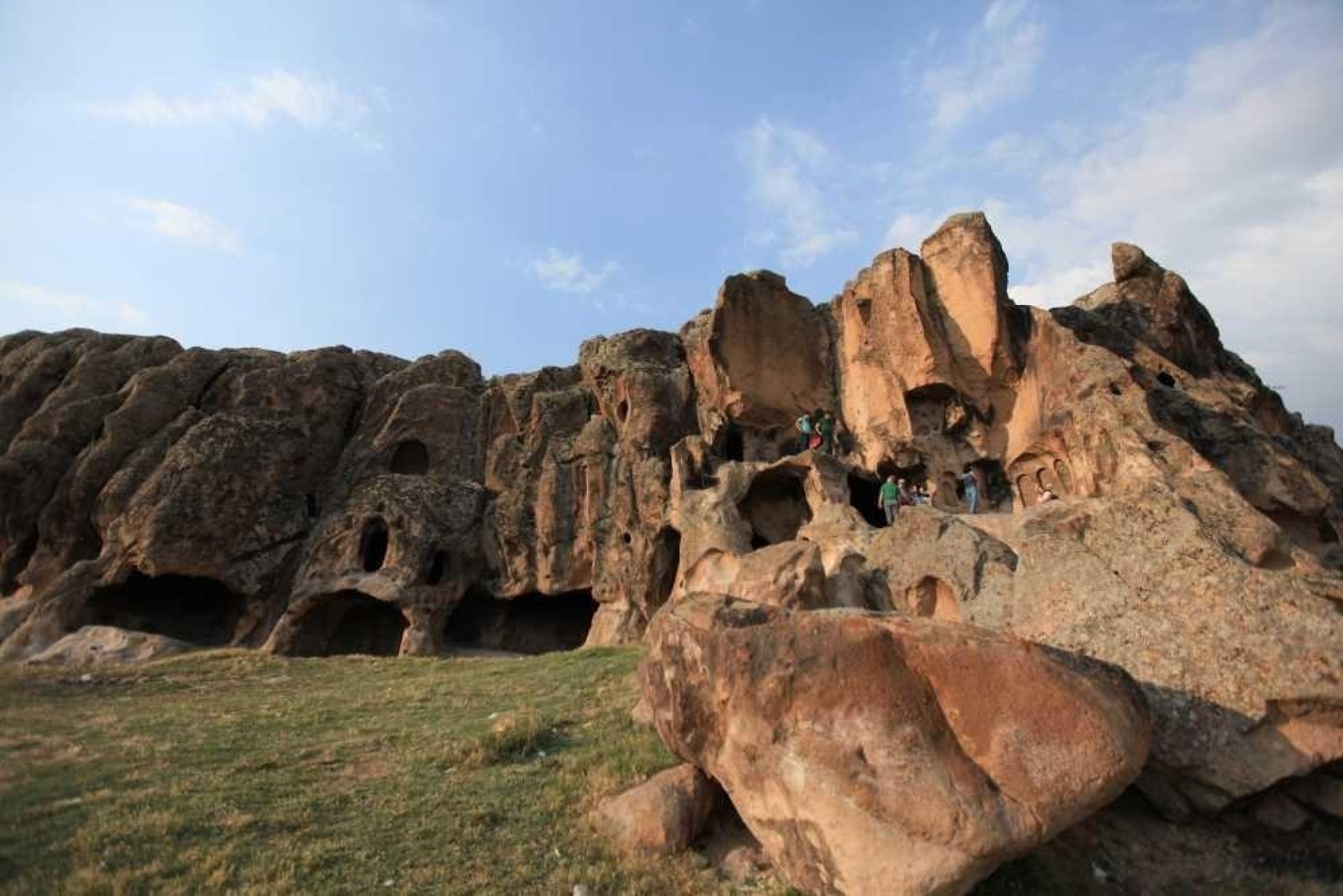
The region defined as the mountainous settlement of ‘‘Phrygia Epiktetus’’ (Little Phrygia) in the triangle of Kütahya, Afyonkarahisar, Eskişehir is today known as the ‘‘Phrygian Valley’’. The area starting from Yeni Bosna Village, 7 kilometers away from the center within the provincial borders, and extending along the east of the province to Ovacık Village, 54 kilometers away from Kütahya; includes the northern part where Sabuncupınar, Söğüt, İnli, Sökmen, Fındık and İncik caves are located, and the Ovacık village, İnlice Neighborhood and its surroundings further south.
The Phrygian plateaus covered with the tuffs of Türkmen Mountain, an ancient volcano to the east of Kütahya; were inhabited by the Phrygians between 900-600 BC. The fact that the volcanic tuff was an easily processed rock allowed the Phrygians to use it for various purposes by carving and carving. Open-air temples, altars and rock tombs dedicated to the mother goddess Kybele from that period, as well as many structures for defense and shelter, have survived to the present day. In the churches and chapels in the region where the Romans and Byzantines later settled, root-painted crosses, meander motifs, traces of writing and frescoes can still be seen. There are natural castles called "Deliktaş Castle" and "Penteser Castle", which were carved into rocks by the Phrygians and Byzantines.
Although the Phrygians were of Indo-European origin, they quickly became Anatolian and, although they were under Ionian and Late Hittite influences on the one hand, they created a unique and Anatolian culture. The works produced by the Phrygians in metalworking, woodworking and weaving were appreciated in the Ionian market and imitated by these masters. Reels, bronze plates with handles and bronze cauldrons; spring-loaded hooked pins (fibulae) made of gold, silver and bronze, which were a "technological" achievement of the period; precious metal garment belts, buckles and richly decorated textile products; geometrically patterned furniture items are among these. The art of kilim, called Topates, influenced the kilim and carpet arts of later Anatolian civilizations. The region is an interesting virgin region covered with pine forests as well as a natural rock structure reminiscent of Cappadocia.
Source: Kütahya Culture and Tourism Directorate ''Kütahya Promotion Brochure''


